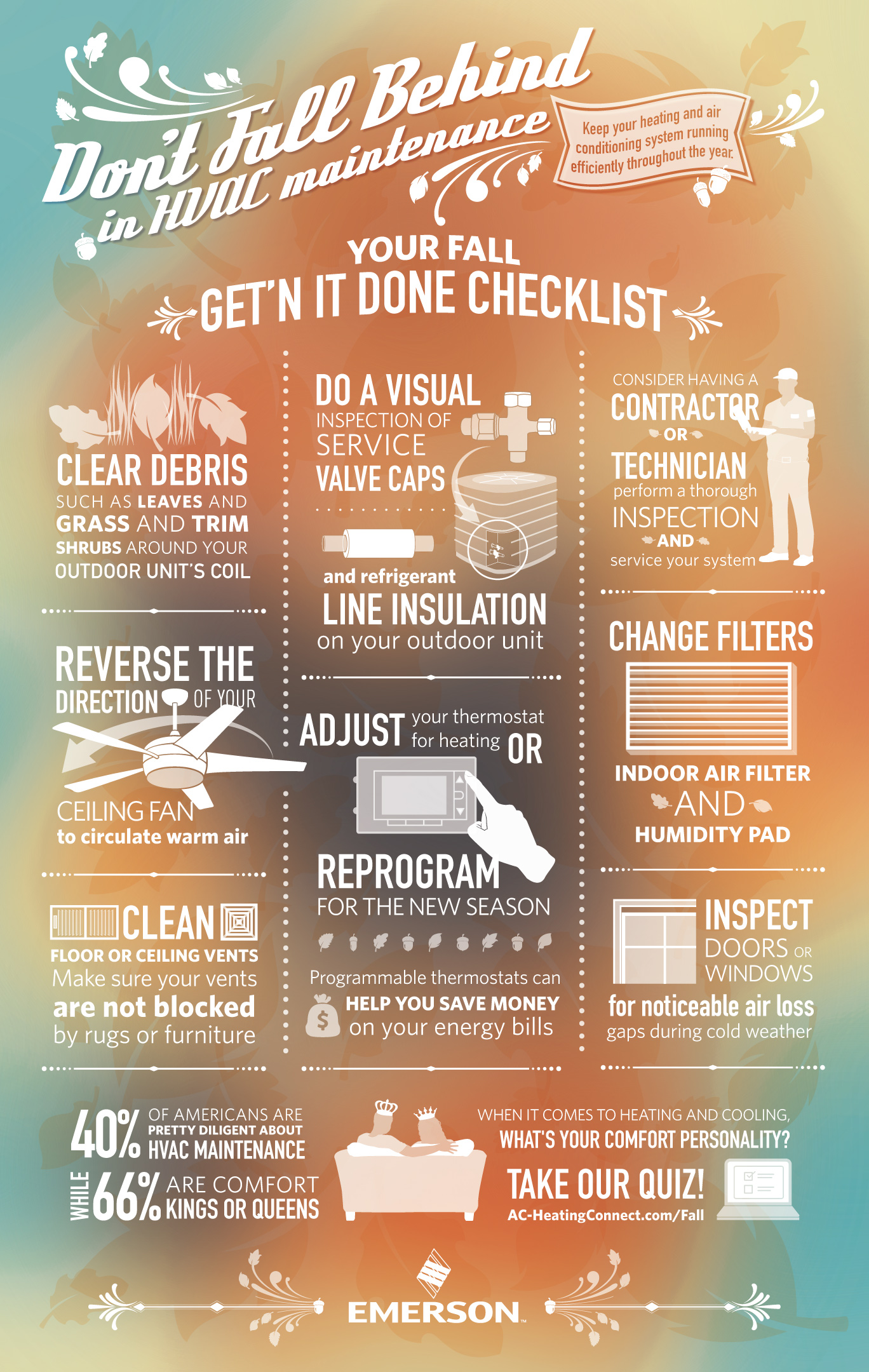Preparing HVAC Systems for the Fall & Winter
About 40% of Americans say they are pretty diligent about HVAC maintenance. In fact, in our online comfort quiz, they even professed to being comfort kings and queens.
Let our new infographic help you educate your diligent or even not-so-diligent customers on how to prepare their HVAC systems for cold weather.

It is generally a good idea to consider doing some basic maintenance on your air conditioning and heating system at the beginning of every heating or cooling season. This is our recommended Fall checklist to prepare your system for the upcoming winter cooling season.
- First, let’s take a look at the outdoor unit.
a. Clear debris around outdoor coil (leaves, grass, cut back bushes, trash cans, trash lids, recycle bins, outdoor dryer vents / lint traps).
b.Make sure any exhaust vents are clear of debris and will not be covered up by deep snow or mulch.
c. Wash / hose out coil with a garden hose.
d. Conduct a visual inspection of service valve caps and refrigerant line insulation.
e. Install an outdoor cover on your A/C unit if you have one.
Here are a few additional tips on the use of outdoor unit covers.
- You can’t use these unit covers on Heat Pump Systems.
- Be sure to take any covers off before you turn the AC system on again.
- If for some reason there is a warm day in the late fall or early spring and you’d like to turn the system on, running it with the cover on could cause serious damage or even ruin the system.
- Next, let’s take a look at the indoor equipment.
a. We recommend changing the indoor air filter at the beginning of each season and this video here, will show you how to do this.
b. You should also consider changing the indoor humidity filter, if applicable.
c. Reset your thermostat for heating and if it is programmable, reprogram for the new season. You can save a lot on your energy bills with a programmable thermostat. Ideally you would want the house to decease in temperature while you are not home, but not so much that it requires a back-up heat source to satisfy.
d. Check indoor coil drain line connections.
e. Check / clean floor or ceiling vents.
f. If you moved any furniture, rugs or wall hangings recently, make sure they are not covering up the vents that supply warm air to the rooms.
g. Inspect your doors and windows for any noticeable air gaps that could cause energy loss when it gets colder. It is easier to repair these now before it gets really cold.
h. Reverse the direction of your ceiling fans to move the warmer air down from the ceiling and from upper halls and stairwells into the living space. In cooler weather, ceiling fans should run clockwise when looking up at the fan.
- Some people also have contractor check-up on their systems once each season or at least every couple of years to walk through professional inspection and maintenance. If you call a contractor, they will generally check the following items:
a. Fuel pressure (Natural Gas, Propane)
b. Clean the fuel nozzle (oil)
c. Inspect the blower motor
d. Clean the burner assembly
e. Inspect exhaust flue and flue draft inducer motor
f. Inspect other sensors and other controls
We hope this check list helps you prepare your system for winter weather. Let us know if you have any other ideas.
To download the infographic in PDF, click here.


